Business Intelligence/Big Data in 2013 and Beyond
原文在这里
By Serhiy Haziyev, Director of Software Architecture at SoftServe, Inc. \\ December 2012
Business Intelligence & Big Data is a current hot trend among multiple technology enabled enterprises and ISVs. In this article we will briefly walk through the top three Business Intelligence trends and solutions that will undoubtedly be still important in 2013.
Over the past two years we have witnessed a rapid emergence of Business Intelligence, despite the fact that the term was coined as far back as 54 years ago by Hans Peter Luhn, a computer scientist at IBM.
In 2010-2011, Analytics and Business Intelligence held the 5th position in a Gartner rank of technologies that CIOs selected as organization priorities, right after Cloud Computing, Virtualization, Mobility and Social Media. Surprising as it may seem, for 2012 Business Intelligence was featured by Garner as number one priority for CIOs.
Figure 1 Gartner CIO survey for the past five years. Image credit: Courtesy of Gartner, Inc.
Apparently, the synergy of the Cloud Computing, Mobility and Social Media wave played a significant role in establishing BI as a current hot trend among multiple technology enabled enterprises and ISVs. Almost every software system produces data (which is usually stored), but this is especially true for Cloud and Social applications.
If data was equated to temperature in physical analogy, according to the second law of thermodynamics its accumulation would lead to the heat death of the universe. Fortunately, BI technologies are evolving at a rapid pace to keep up with the exponential raise of data and project complexity.
In this article we will briefly walk through the top three BI trends and solutions that will undoubtedly be still important in 2013.
Self-Service Business Intelligence
The reason why Self-Service BI is so attractive is that it allows end-users to build reports or dashboards without requesting IT to do so, thus making the process much faster, and the results – much more precise. At the early stages there were significant usability and performance challenges that slowed down the adoption of Self-Service solutions, but the introduction of In-Memory Analytics offered encouraging simplicity and power.
When the RAM memory became cheaper, innovative companies like QlikTech and Tableau received an incredible advantage at the Self-Service BI market. Nowadays almost all industry leaders include In-Memory analytics into their products in order to make them more competitive in the market – Microsoft (Power Pivot), SAP (Hana), IBM (Cognos) are just a few of them.
Cloud Business Intelligence
The recent Software-as-a-Service (SaaS) boom has created thousands of Cloud-based applications. Elimination of up-front costs as a result of a monthly or an annual subscription model lured business users in, and their data started flooding Cloud storages instead of being scattered somewhere on the customers’ premises.
Consequently, the further growth of user base and data accumulation generated a number of technical challenges for data storage & analysis as well as brand new business opportunities.
The topmost challenge is multi-tenancy, or ability to isolate and process the data of multiple customers in the same application. The essential challenge, of course, is delivering interactive reports and dashboards in a browser mode as the Cloud era demands.
A number of proprietary BI solution vendors (MicroStrategy, SAP BusinessObjects) as well as open-source vendors (JasperSoft, BIRT) have already created such a solution, and apparently in the near future we are going to see more BI vendors and their products supporting a Cloud model.
Big Data
Before we start discussing the current state of Big Data and making any predictions, it is worth mentioning that Big Data does not always mean analytics and BI. In general, most definitions agree that Big Data is data sets which are difficult to capture, store, search, share, analyze and visualize. While some of the mentioned activities do have a direct relation to Business Intelligence, the other ones such as capturing and storage may not require explicit analysis. For example, in the so called Next Generation Sequencing, a single person’s DNA file can take several terabytes, which makes the file management extremely difficult.
Another misconception is that the popular Hadoop software framework is a silver bullet for the Big Data challenge, even though Apache foundation community (the one incubating Hadoop) did a great job describing what Hadoop is Not. For the already mentioned example challenge of storing large DNA files, Network Attached Storage (NAS) is an absolutely adequate solution, while Hadoop would struggle with the task because of its low capturing performance and triple data replication redundancy.
The modern market offers multiple solutions for handling large data sets, including Hadoop as a backend and reporting tools built on top of it such as Jasper or Tableau; NoSQL databases such as Mongo DB or Cassandra; column-oriented storages such as HP Vertica or Teradata; and finally – Cloud solutions such as Google BigQuery. The fact is that every Big Data need requires thorough analysis and designing a solution that is sometimes based on a mix of different vendor products. Next year will most probably not change this status quo.
Conclusion
In this article we`ve discussed only three BI trends, but there are a few other trends worth mentioning in Predictive, Mobile, Operational and Sentimental Analytics fields. In general, according to the Gartner Magic Quadrant for BI, the market will continue to grow at a compound rate of 8.1% annually until 2015.
Among multiple industries that utilize BI, we are likely to see a boost in Healthcare, especially so in programs related to Meaningful Use, Pay-for-performance (P4P) and ACO (Accountable care organizations).
And finally, we will most probably witness a rise of the Agile Business Intelligence trend that leverages Self-Service BI, Cloud BI and data discovery dashboards to accelerate the time it takes to deliver value with BI projects.
References:
- Worldwide BI, Analytics and Performance Management Revenue Estimates for 2011 by Gartner
- Why QlikView In-Memory wins over OLAP Technology
- SoftServe Realizes Advanced Big Data Reporting by Embedding Jaspersoft
- Gartner Taps Predictive Analytics as Next Big Business Intelligence Trend
- SoftServe Lowers Big Data Development Costs by 25 Percent with Jaspersoft
About the Author
Serhiy Haziyev is a Director of Software Architecture at SoftServe, Inc., a leading global provider of software development, testing and consulting services. Serhiy has more than 15 years of experience in enterprise-level solutions including SaaS/Clouds, Big Data, SOA and Carrier-grade telecommunication services. He specializes in software architecture methodologies, architectural patterns and software development practices for large and complex projects in healthcare and other industry verticals. Serhiy holds various qualifications including IBM Certified SOA Solution Designer and Microsoft Certified Professional. He is a frequent speaker at external and corporate conferences, where he conducts educational workshops sharing concepts and providing practical input to emerging technologies. Currently Serhiy leads, mentors and motivates the SoftServe Architecture Team consisting of more than 20 seasoned professionals.
 关注公众号
关注公众号 低调大师中文资讯倾力打造互联网数据资讯、行业资源、电子商务、移动互联网、网络营销平台。
持续更新报道IT业界、互联网、市场资讯、驱动更新,是最及时权威的产业资讯及硬件资讯报道平台。
转载内容版权归作者及来源网站所有,本站原创内容转载请注明来源。
- 上一篇

Splunk实现与Hadoop的集成与监控
2012年10月24日,实时运营信息软件供应商Splunk宣布Splunk Hadoop Connect和Splunk App for HadoopOps现已全面上市。Splunk Hadoop Connect可提供双向集成,轻松可靠地完成在Splunk与Hadoop之间迁移数据。Splunk App for HadoopOps可对端到端Hadoop环境的健康和性能进行实时监控和分析。Splunk Hadoop Connect和 Splunk App for HadoopOps即日起可供下载。 Apache Hadoop项目管理委员会主席Arun Murthy表示:“Splunk Hadoop Connect让Hadoop用户更轻松地利用Splunk将大数据带入企业。它让Splunk和Hadoop更紧密地联系在一起,为用户开启了无限可能。Hadoop未来发展的关键技术因素是利用Hadoop从数据中获得情报的软件。” Edmunds.com生产工程高级总监John Martin表示:“我们不断将数据传输至Splunk,以支持我们的运营、应用、安全团队和高管人员并为他们提供情报。我们还部署...
- 下一篇

hadoop和Hive的数据处理流程
需求 场景:统计每日用户登陆总数 每分钟的原始日志内容如下: http://www.blue.com/uid=xxxxxx&ip=xxxxxx 假设只有两个字段,uid和ip,其中uid是用户的uid,是用户的唯一标识,ip是用户的登陆ip,每日的记录行数是10亿,要统计出一天用户登陆的总数。 处理流程 建表 那么我们首先要在hive里建表,建表语句如下: CREATE TABLE login ( uid STRING, ip STRING ) PARTITIONED BY (dt STRING) ROW FORMAT DELIMITED FIELDS TERMINATED BY ',' STORED AS TEXTFILE; 其实表名是login,字段之间以,隔开,存储是TEXT,其次还以dt这个字段作为分区。 创建成功之后,会看到hdfs上创建了/user/hive/warehouse/login这个目录。 格式化原始日志 将每天的每分钟的原始日志,转换成以下文件格式 123,17.6.2.6 112,11.3.6.2 ……….. 根据文件大小,合并文件,例如合并为24...
相关文章
文章评论
共有0条评论来说两句吧...
文章二维码
点击排行
推荐阅读
最新文章
- CentOS7安装Docker,走上虚拟化容器引擎之路
- SpringBoot2整合MyBatis,连接MySql数据库做增删改查操作
- SpringBoot2全家桶,快速入门学习开发网站教程
- CentOS8安装MyCat,轻松搞定数据库的读写分离、垂直分库、水平分库
- CentOS6,7,8上安装Nginx,支持https2.0的开启
- CentOS7编译安装Cmake3.16.3,解决mysql等软件编译问题
- CentOS关闭SELinux安全模块
- CentOS7设置SWAP分区,小内存服务器的救世主
- Docker安装Oracle12C,快速搭建Oracle学习环境
- Docker快速安装Oracle11G,搭建oracle11g学习环境



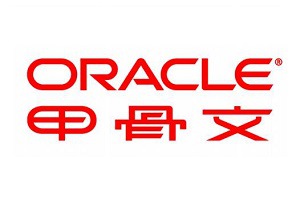

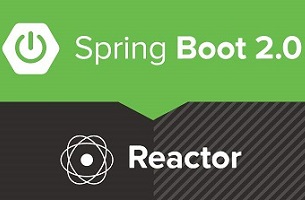
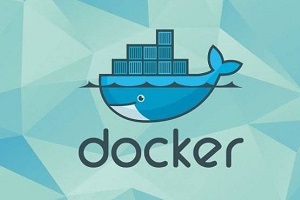
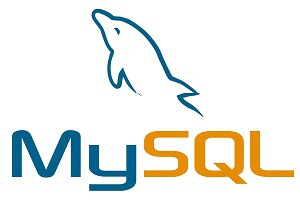

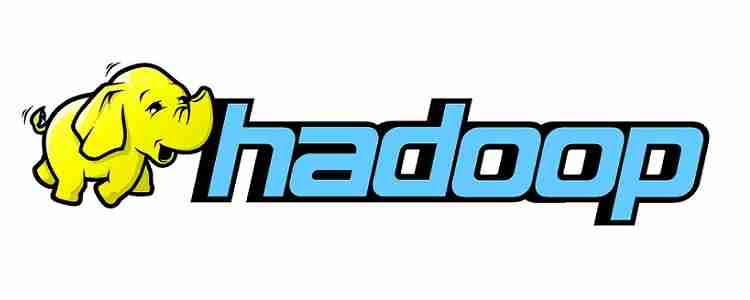
 微信收款码
微信收款码 支付宝收款码
支付宝收款码